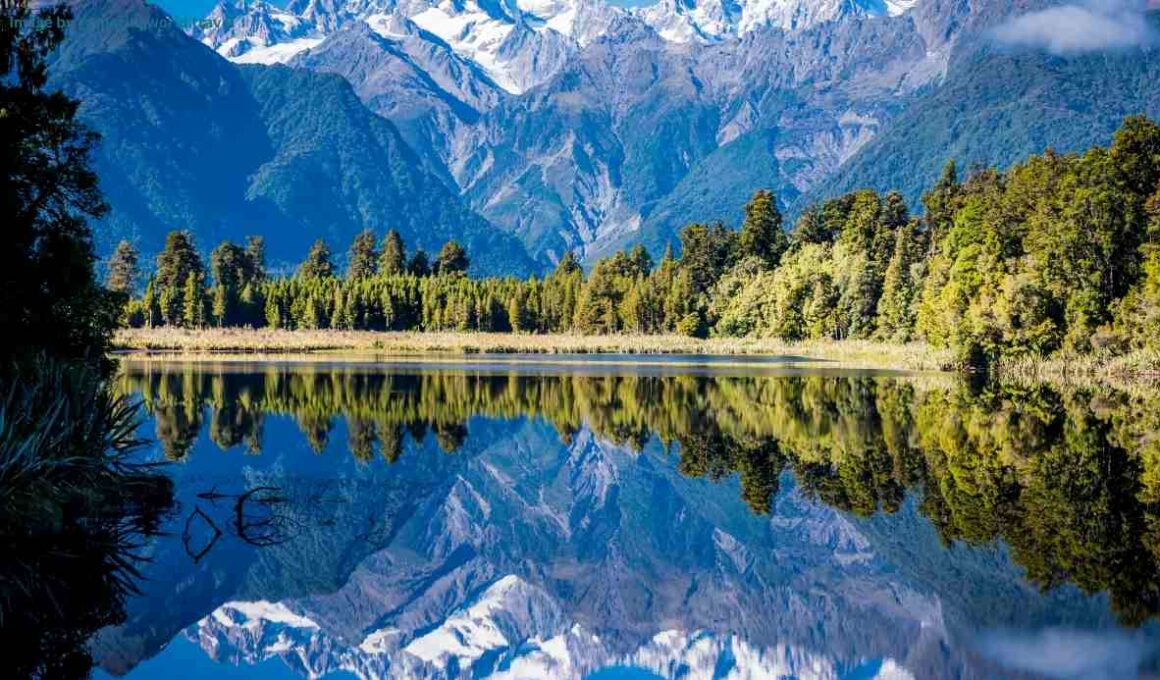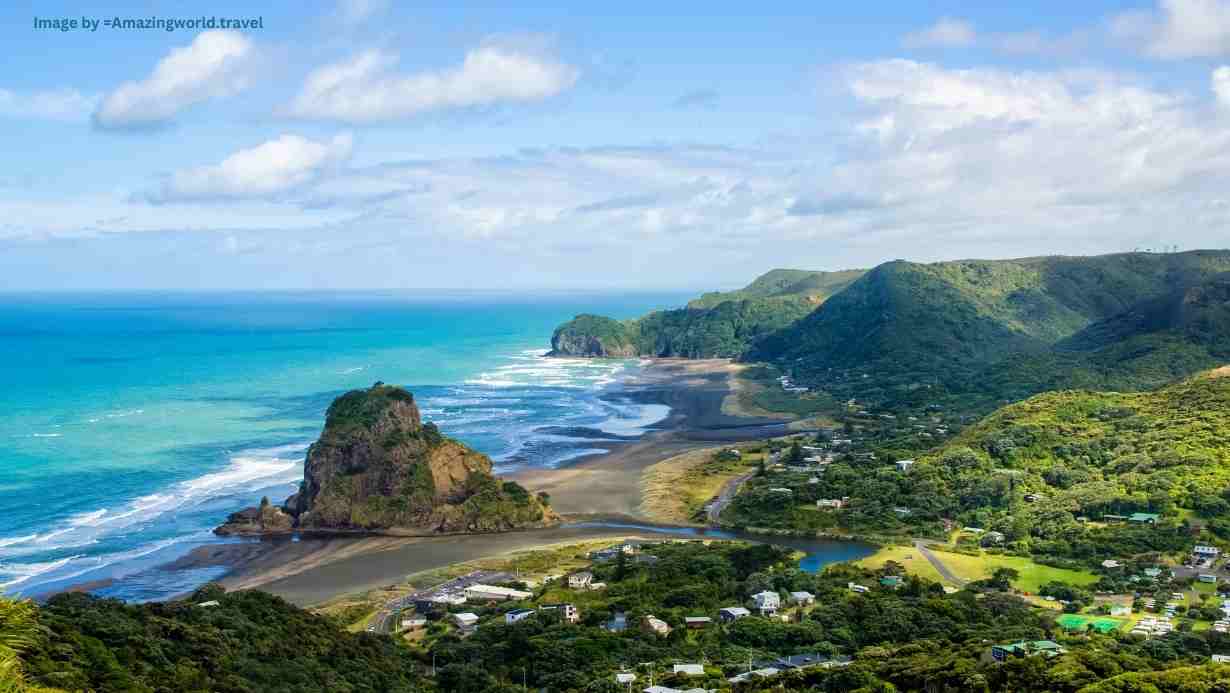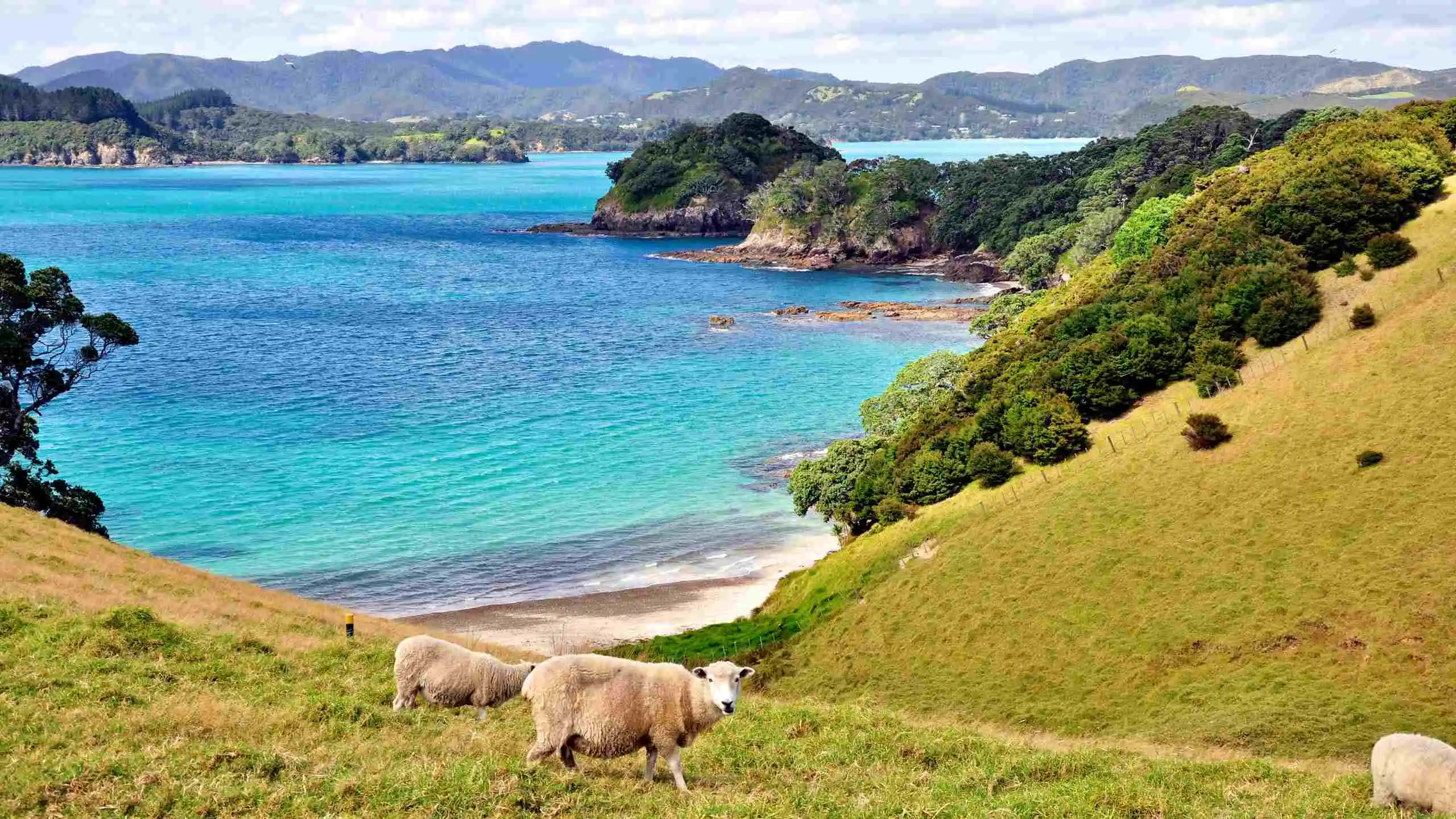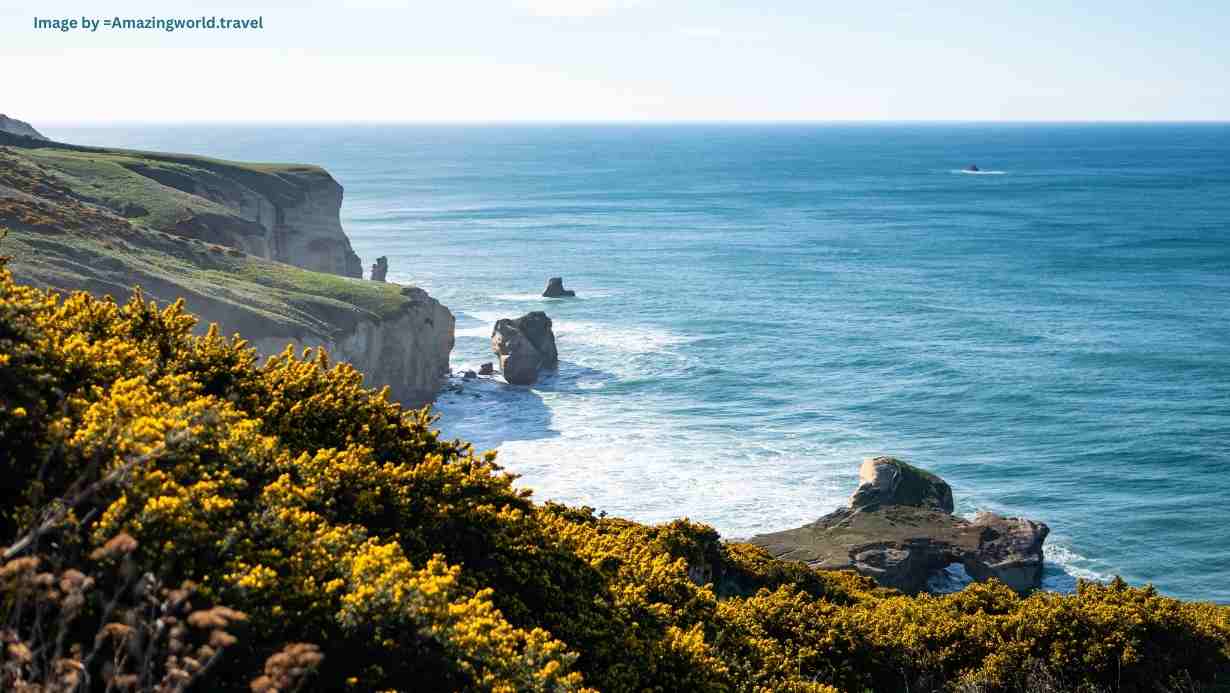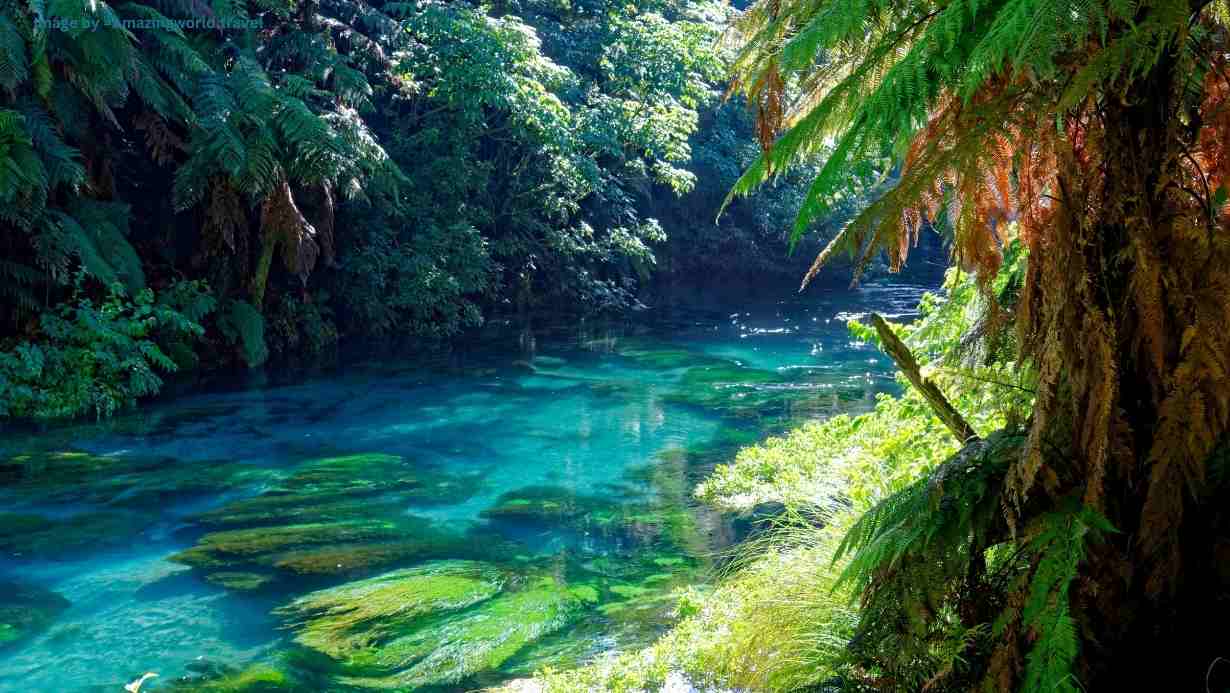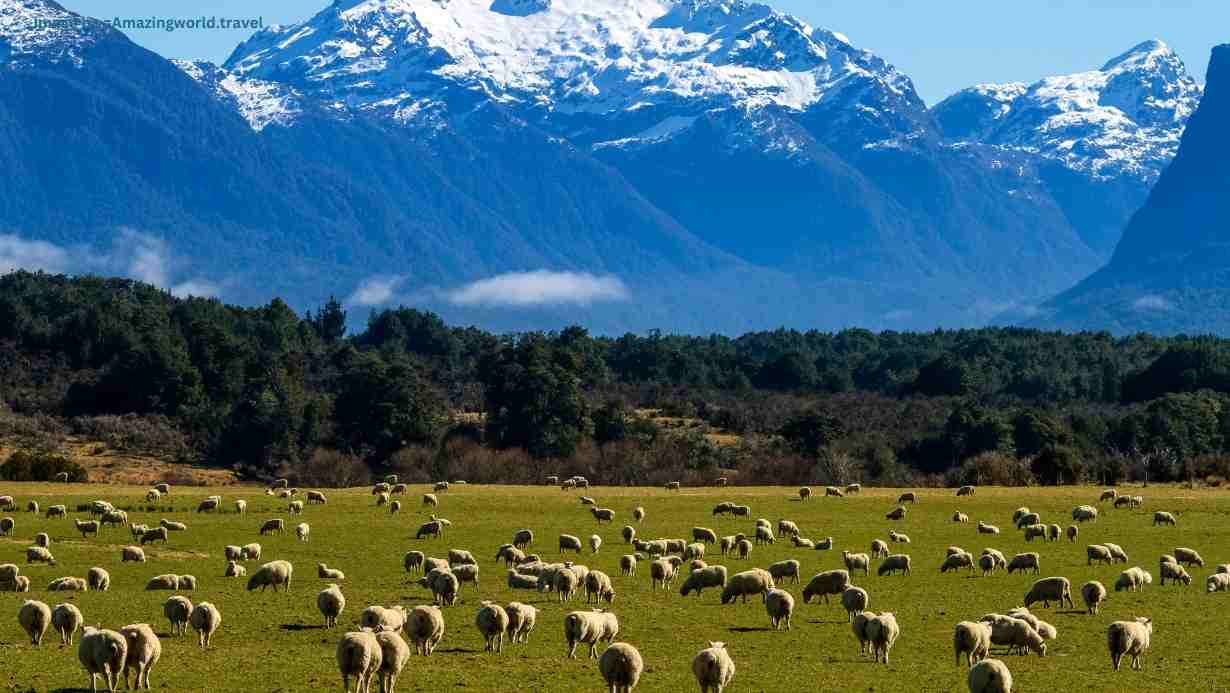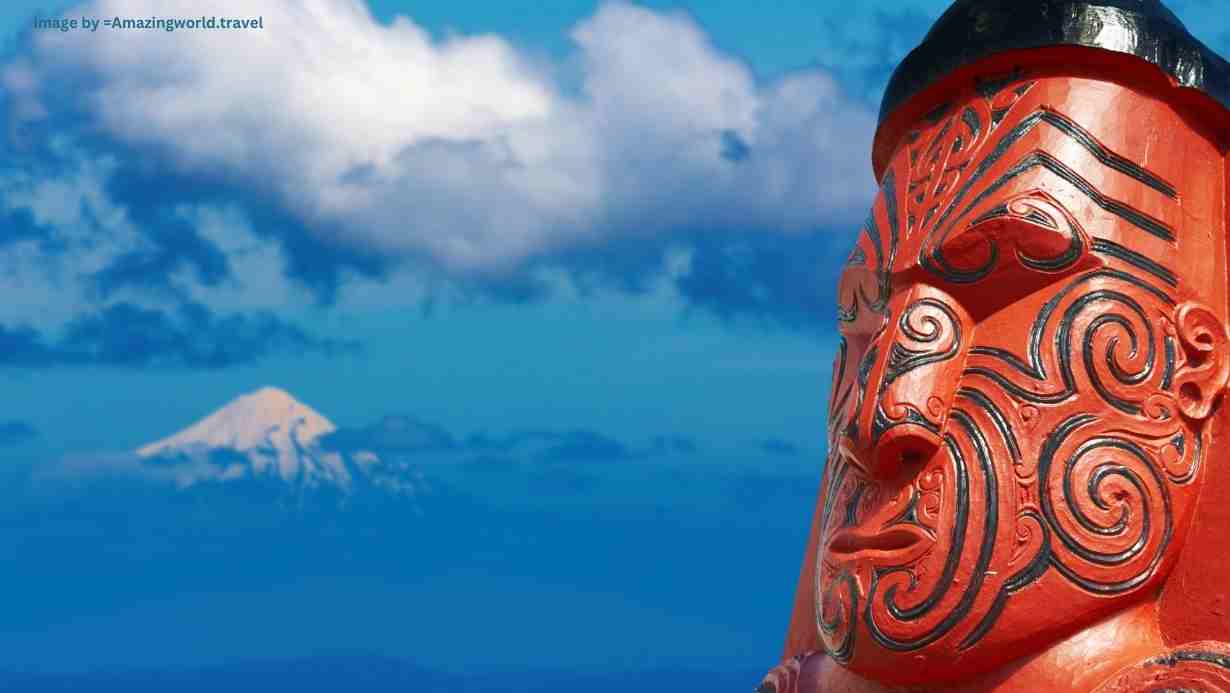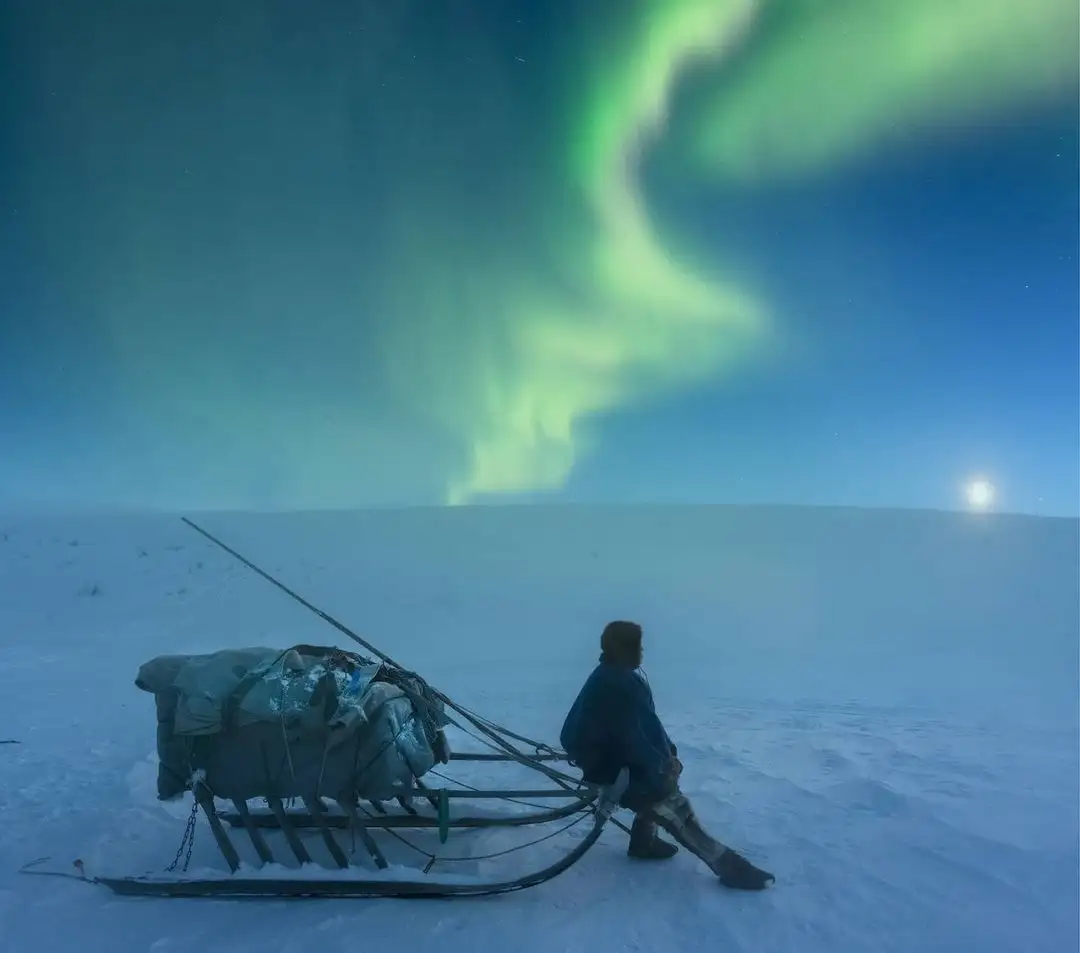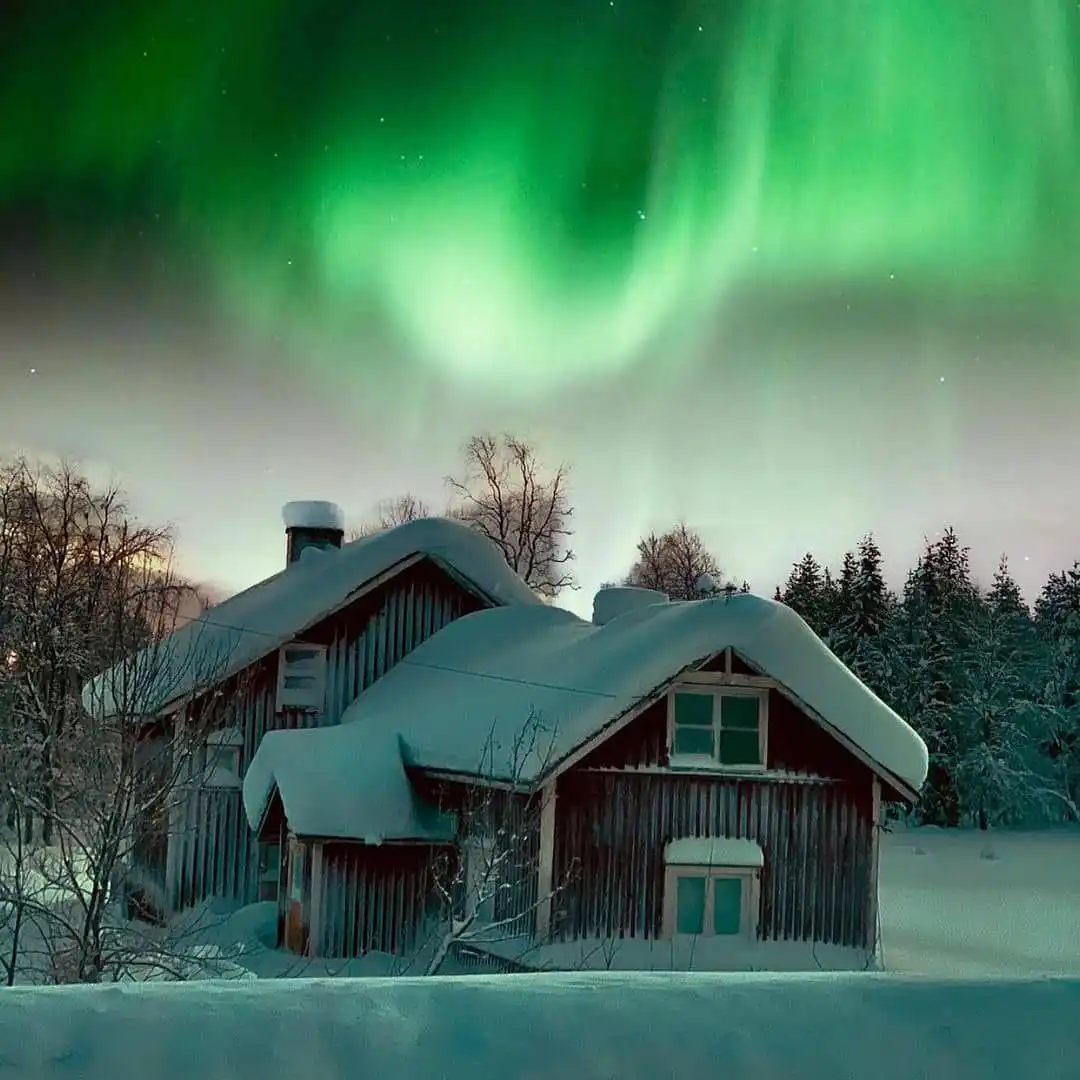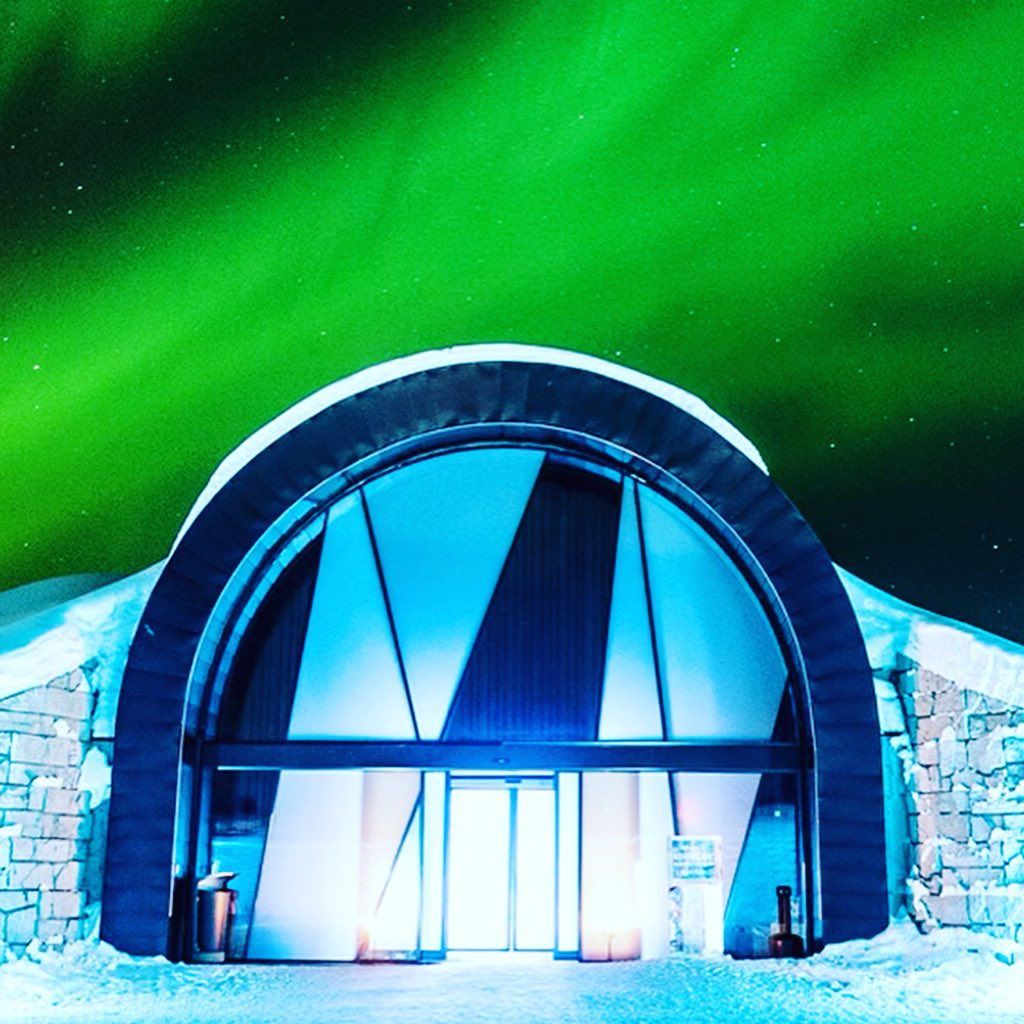Best Time to Visit New Zealand : Weather, Climate
Are you dreaming of embarking on an unforgettable journey to the mesmerizing landscapes of New Zealand? The Land of the Long White Cloud beckons travelers with its breathtaking beauty and diverse experiences, promising a dream trip that unfolds differently with each passing season.
Discovering the optimal time to visit New Zealand becomes an essential part of planning your adventure. Each season brings forth its unique allure, catering to varied interests and preferences. Whether you crave outdoor escapades, cultural immersion, or serene natural wonders, understanding the best times to visit this captivating country ensures a truly memorable and fulfilling experience.
Join us as we navigate through the seasonal guide, unveiling the prime moments to explore New Zealand and curate your dream expedition.
“If you are looking for the best hotel and flight deals for your next vacation, then we recommend booking your bundled flight and hotel through hotwire.com.“
About New Zealand: An Overview
New Zealand, a captivating island nation in the South Pacific, boasts stunning natural beauty, including diverse landscapes like mountains, beaches, forests, and geothermal wonders. It’s home to a rich Maori culture, reflected in traditions, language, and historical sites.
With cities like Auckland, Wellington, and Christchurch blending urban life with natural splendor, New Zealand offers a mix of bustling culture and scenic beauty. Its economy thrives on industries like agriculture, tourism, technology, and film production.
Renowned as an adventure sports paradise, New Zealand attracts thrill-seekers with activities like bungee jumping, skiing, and hiking. Its reputation as a filming location for popular movies like “The Lord of the Rings” contributes to its global recognition.
New Zealand’s allure lies in its breathtaking landscapes, vibrant culture, economic diversity, and abundant opportunities for adventure and exploration.
How to visit New Zealand
Visiting New Zealand involves several essential steps to ensure a smooth and enjoyable trip. Here’s a guide on how to plan and visit New Zealand:
- Travel Documents and Visa: Check the entry requirements for your country. Many visitors need a visa or an Electronic Travel Authority (ETA) to enter New Zealand. Ensure your passport is valid for at least three months beyond your planned departure date.
- Flight Arrangements: Book your flights to New Zealand. The country has several international airports, with Auckland Airport being the largest and the most common entry point for international travelers.
- Transportation: Decide on transportation within New Zealand. Options include renting a car, using buses or trains, or domestic flights. Renting a car is a popular choice as it offers flexibility and access to remote areas.
- Currency and Finances: Familiarize yourself with the local currency (New Zealand Dollar – NZD) and ensure you have access to funds during your visit. Credit cards are widely accepted, but it’s advisable to have some cash for smaller purchases and in more remote areas.
Remember to check for any travel advisories or updates from official sources before your trip. Planning ahead and staying informed will help make your visit to New Zealand a memorable and enjoyable experience.
Month-by-month guide for traveling in New Zealand
Summer (December to February)
New Zealand’s summer, spanning from December to February, is a vibrant and popular time for travelers due to the warm weather and extended daylight hours. This season is an ideal time for outdoor activities, exploration, and enjoying the country’s diverse landscapes.
December: December marks the beginning of summer in New Zealand. The weather is generally warm, making it perfect for outdoor adventures and beach activities.
Highlights and Activities:
-
-
- Beach Escapades: Visit stunning beaches such as Piha, Mount Maunganui, or Abel Tasman National Park to bask in the sun and enjoy water sports like surfing, kayaking, or simply relaxing by the shore.
- Festive Celebrations: Experience the festive season in New Zealand with Christmas markets, parades, and events showcasing a blend of Maori and Western traditions.
-
January: As the summer heat intensifies, January offers an array of outdoor adventures and cultural experiences.
Highlights and Activities:
-
-
- Hiking and Nature Trails: Explore the numerous hiking trails across the country. The Tongariro Alpine Crossing or Routeburn Track provides breathtaking scenery and challenging treks.
- Festivals and Events: Attend festivals like the Wellington Sevens Rugby Tournament or the Auckland Anniversary Day Regatta, celebrating culture and sports.
-
February: Towards the end of summer, February retains warm weather, making it an excellent time for various outdoor activities and exploration.
Highlights and Activities:
-
-
- Wine Tours: Visit renowned wine regions such as Marlborough or Hawke’s Bay for vineyard tours and wine tastings in picturesque settings.
- Water Adventures: Enjoy water-based activities like snorkeling, diving, or cruising in the Bay of Islands or the Coromandel Peninsula.
-
During the summer months, it’s essential to book accommodations and activities in advance due to the high influx of tourists. Remember to pack sunscreen, hats, and light clothing to stay comfortable in the warm weather.
Autumn (March to May)
Autumn in New Zealand, spanning from March to May, presents a picturesque landscape adorned with vibrant colors as the foliage transitions to golden hues. This season offers a mix of pleasant weather, fewer crowds, and various activities amidst the changing scenery.
March: March signifies the onset of autumn in New Zealand, with mild temperatures and beautiful scenery as the leaves begin to change colors.
Highlights and Activities:
- Wine Harvest Festivities: Participate in grape harvest events and vineyard tours in wine regions like Central Otago or Martinborough.
- Outdoor Exploration: Explore national parks like Fiordland or Mount Aspiring, witnessing the stunning autumnal foliage while hiking or enjoying scenic drives.
April: As autumn progresses, April offers mild weather and an opportunity to witness the breathtaking landscapes in their transitional phase.
Highlights and Activities:
- Fall Foliage Viewing: Visit locations like Arrowtown, Wanaka, or the West Coast to witness the stunning autumn foliage, especially around the lakes and mountainous regions.
- Festivals and Cultural Events: Engage in cultural events like the Hokitika Wildfoods Festival, showcasing local cuisine and crafts.
May: Towards the end of autumn, May brings cooler temperatures and a quieter atmosphere, making it an ideal time for a tranquil getaway.
Highlights and Activities:
Wildlife Encounters: Visit wildlife sanctuaries or coastal areas like Kaikoura to observe seals, dolphins, and migrating birds.
Scenic Train Journeys: Experience scenic train rides like the TranzAlpine Railway, offering stunning views of the changing landscapes.
Autumn in New Zealand allows for a more relaxed exploration of the country’s natural beauty. It’s a great time for photography enthusiasts to capture the landscapes bathed in autumnal colors while enjoying the mild climate and diverse activities.
Winter (June to August)
New Zealand’s winter, spanning from June to August, transforms the landscape into a picturesque winter wonderland, offering unique experiences amidst snowy peaks and cozy atmospheres.
June: June marks the beginning of winter in New Zealand, bringing cooler temperatures and the onset of snow in mountainous regions.
Highlights and Activities:
-
-
- Snow Sports: Head to ski resorts in Queenstown, Wanaka, or Mt. Ruapehu for skiing, snowboarding, and other snow-related activities.
- Winter Festivals: Participate in events like Matariki, a Maori New Year celebration with cultural performances, arts, and traditional food.
-
July: July is mid-winter in New Zealand, offering prime conditions for snow sports and captivating winter landscapes.
Highlights and Activities:
-
-
- Skiing and Snowboarding: Enjoy the peak of winter sports in renowned ski fields like Coronet Peak and The Remarkables in Queenstown.
- Thermal Hot Springs: Relax in natural hot springs like Hanmer Springs or Rotorua’s geothermal pools, providing a warm respite from the chilly weather.
-
August: Towards the end of winter, August maintains snowy conditions, making it an excellent time for winter adventures and unique experiences.
Highlights and Activities:
-
-
- Aurora Australis: In southern regions like Dunedin or Stewart Island, there’s a chance to witness the Southern Lights (Aurora Australis) on clear nights.
- Winter Wildlife Watching: Observe wildlife such as seals or penguins on the South Island’s coastal regions.
-
Winter in New Zealand offers a wide array of activities, from adrenaline-pumping snow sports to serene experiences in thermal hot springs or witnessing the enchanting Aurora Australis, making it a captivating season for visitors seeking both adventure and tranquility.
Spring (September to November)
New Zealand’s spring, spanning from September to November, is a time of rejuvenation, where the country blossoms with vibrant colors, emerging wildlife, and pleasant weather, making it an ideal season for outdoor exploration and witnessing nature’s renewal.
September: Spring begins in September, bringing a burst of color as flowers bloom and wildlife becomes more active.
Highlights and Activities:
-
-
- Flower Festivals: Attend events like the Taranaki Rhododendron & Garden Festival or the Spring Festival in Wellington, celebrating the blooming flora.
- Outdoor Adventures: Explore national parks and trails as nature awakens, offering picturesque landscapes and hiking opportunities.
-
October: October represents peak springtime in New Zealand, characterized by pleasant weather and an abundance of blossoming flowers.
Highlights and Activities:
-
-
- Springtime Gardens: Visit renowned gardens like Pukekura Park in New Plymouth or Hamilton Gardens to admire the diverse floral displays.
- Wildlife Spotting: Witness newborn lambs in the countryside or visit conservation areas to observe baby seals and native birds.
-
November: Towards the end of spring, November brings warmer temperatures and longer daylight hours, making it ideal for various outdoor activities.
Highlights and Activities:
-
-
- Adventure Sports: Engage in activities like mountain biking, kayaking, or zip-lining as the weather becomes more favorable.
- Marine Encounters: Take boat tours to spot whales, dolphins, and seals as they become more active along the coastlines.
-
Spring in New Zealand offers a kaleidoscope of colors, from blooming flowers to vibrant landscapes, providing a delightful experience for nature enthusiasts and adventure seekers alike.
When to Visit Based on Your Interests
Determining the best time to visit New Zealand often depends on your specific interests and the experiences you seek. Here’s a simplified guide to help you decide based on different preferences:
For Adventure Enthusiasts:
Best Time: Winter (June to August) for skiing, snowboarding, and other snow-related activities in places like Queenstown or Mt. Ruapehu.
Alternative Time: Spring (September to November) for outdoor adventures like hiking, mountain biking, and kayaking as the weather gets warmer and nature comes alive.
For Beach Lovers and Water Activities
Best Time: Summer (December to February) for enjoying the stunning beaches, water sports, and sunshine across various coastal areas like Piha or Abel Tasman National Park.
Alternative Time: Late spring (November) to early autumn (March) for slightly warmer water temperatures and fewer crowds.
For Nature and Scenic Beauty
Best Time: Autumn (March to May) for witnessing the breathtaking fall foliage and enjoying scenic drives amidst the changing colors, especially in places like Wanaka or Arrowtown.
Alternative Time: Spring (September to November) as nature blooms and vibrant colors emerge, perfect for exploring gardens and national parks.
For Wildlife Watching
Best Time: Winter (June to August) for observing wildlife such as seals, penguins, and whales along the coasts during their active season.
Alternative Time: Spring (September to November) as many animals give birth and become more visible in their natural habitats.
For Cultural and Festive Experiences
Best Time: December for experiencing Christmas markets and festive celebrations with a mix of Maori and Western traditions.
Alternative Time: Various months throughout the year to attend cultural festivals, events, and celebrations, such as Matariki or flower festivals in spring.
Choosing the best time to visit New Zealand depends on aligning your interests with the activities and experiences that each season offers. Whether you seek adventure, relaxation, natural beauty, or cultural immersion, there’s a suitable time of year to fulfill your preferences in this diverse and stunning country.
New Zealand Climate Guide
New Zealand’s climate varies across regions due to its diverse geography, offering everything from subtropical in the north to cooler temperatures in the south. Here’s a simplified guide to New Zealand’s climate:
- North Island:
- Northern Region: Subtropical climate with warm summers (December to February) and mild winters (June to August). High humidity and rainfall, especially in winter.
- Central North Island: Variable weather with warm summers and cold winters. Snowfall in mountainous regions during winter months.
- Eastern Coast: Warm and dry summers, with mild winters. Less rainfall compared to other areas.
- Western Coast: Mild temperatures with significant rainfall throughout the year. Rain is common even in summer.
- South Island:
- Northern South Island: Mild summers and cool winters. Rainfall evenly distributed throughout the year, but less than the west coast.
- Southern Alps and Central Otago: Cooler climate with snowy winters, making it a popular skiing destination.
- West Coast: High rainfall throughout the year, especially during winter. Mild temperatures but can be wet and cloudy.
- Eastern Coast: Generally drier and sunnier compared to the west coast. Warm summers with cooler winters.
- Overall Climate Patterns:
- Summer (December to February): Warm and pleasant across the country. Best for beach activities, outdoor adventures, and festivals. Peak tourist season.
- Autumn (March to May): Mild temperatures with colorful foliage. Ideal for hiking, wine tours, and observing autumn landscapes.
- Winter (June to August): Cooler temperatures, especially in the south. Great for skiing, snow sports, and experiencing winter festivals.
- Spring (September to November): Nature blooms with vibrant colors. Suitable for wildlife watching, garden tours, and outdoor activities.
- General Tips:
- Weather can be changeable, so pack layers and waterproof clothing regardless of the season.
- Check regional forecasts as weather conditions can differ significantly between areas.
- Sunscreen is essential even in cooler months due to New Zealand’s high UV levels.
New Zealand’s diverse climate offers a wide range of experiences throughout the year, catering to various preferences from outdoor adventures to winter sports and cultural festivals. Understanding the climate patterns helps in planning activities and packing accordingly for a comfortable and enjoyable visit.
Popular Attractions at New Zealand
New Zealand is packed with incredible attractions spanning stunning natural landscapes, cultural sites, adventure hotspots, and unique experiences. Here are some of the country’s popular attractions:
- Fiordland National Park:
- Description: Home to Milford Sound and Doubtful Sound, these fiords showcase breathtaking scenery with towering cliffs, waterfalls, and pristine wilderness. Boat cruises offer a close-up view of this natural wonder.
- Tongariro National Park:
- Description: A UNESCO World Heritage Site known for its volcanic landscapes, including Mount Tongariro and Mount Ruapehu. The Tongariro Alpine Crossing is a famous day hike showcasing stunning vistas.
- Bay of Islands:
- Description: A picturesque region known for its stunning coastline, secluded bays, and 144 islands. Visitors can enjoy sailing, dolphin watching, kayaking, and exploring historic sites like the Waitangi Treaty Grounds.
- Hobbiton Movie Set:
- Description: Located in Matamata, this film set from “The Lord of the Rings” and “The Hobbit” movies offers guided tours through the charming hobbit holes and lush green landscapes.
- Rotorua’s Geothermal Wonders:
- Description: Known for its bubbling mud pools, geysers, and thermal springs, Rotorua provides a unique glimpse into geothermal activity. Visitors can enjoy mud baths, cultural experiences, and geothermal parks like Te Puia and Wai-O-Tapu.
- Queenstown:
- Description: A hub for adventure sports enthusiasts, offering activities like bungee jumping, skydiving, jet boating, and skiing in winter. The town is surrounded by stunning mountain scenery and sits on the shores of Lake Wakatipu.
- Aoraki/Mount Cook National Park:
- Description: Home to New Zealand’s highest peak, Mount Cook, this park boasts glaciers, alpine scenery, and hiking trails. Visitors can experience stargazing and explore the Tasman Glacier.
- Te Papa Tongarewa (Te Papa Museum):
- Description: New Zealand’s national museum in Wellington, offering a comprehensive insight into the country’s history, art, culture, and natural environment through interactive exhibits.
- Abel Tasman National Park:
- Description: Known for its golden beaches, crystal-clear waters, and coastal hiking trails. Visitors can explore by kayaking, sailing, or taking scenic cruises along the coastline.
- Fox and Franz Josef Glaciers:
- Description: Located on the West Coast, these glaciers offer a unique opportunity for guided walks, helicopter flights, and glacier landings, allowing visitors to witness the impressive ice formations up close.
These attractions represent just a glimpse of the diverse and captivating experiences New Zealand has to offer, catering to a wide range of interests and preferences for travelers from around the world.
Trip Advice and Travel Guides for Exploring New Zealand
Exploring New Zealand involves planning to make the most of its diverse offerings. Here’s some trip advice and travel guides for a memorable experience:
- Plan Your Itinerary:
- Research and Prioritize: Identify the regions, attractions, and activities that align with your interests. Consider the time of year and the duration of your visit.
- Balance Your Trip: Mix outdoor adventures with cultural experiences, city exploration, and relaxation to get a well-rounded experience of New Zealand.
- Transportation:
- Renting a Car: Consider renting a car for flexibility, especially for exploring remote areas and scenic drives. Remember to drive on the left side of the road.
- Public Transport: New Zealand offers bus networks and trains, making it convenient to travel between major cities and popular tourist spots.
- Accommodation:
- Varied Options: Choose from a range of accommodations including hotels, motels, hostels, holiday parks, Airbnb, and boutique lodges.
- Book in Advance: Especially during peak tourist seasons, booking accommodations in advance ensures availability.
- Weather Considerations:
- Layered Clothing: Pack clothing for varied weather conditions. Even in summer, temperatures can change quickly.
- Rain Gear: Carry waterproof clothing, especially if exploring regions known for rainfall.
- Adventure Activities:
- Safety Precautions: Follow safety instructions for adventure sports like bungee jumping, skydiving, and hiking. Use reputable tour operators.
- Seasonal Activities: Check for seasonal availability of activities like skiing, snowboarding, and whale watching.
- Cultural Experiences:
- Maori Culture: Engage in cultural tours, performances, and visits to historical sites to learn about Maori traditions and heritage.
- Local Cuisine: Taste local specialties and visit farmers’ markets for a culinary experience.
- Travel Guides and Apps:
- Guidebooks: Carry guidebooks or download travel apps for information on attractions, maps, accommodations, and local insights.
- Online Resources: Utilize official tourism websites and forums for updated information and travel tips.
- Health and Safety:
- Travel Insurance: Consider comprehensive travel insurance that covers medical emergencies and trip cancellations.
- Emergency Contacts: Keep important contacts, including emergency numbers and consulate details, handy.
- Responsible Travel:
- Environmental Awareness: Respect nature and follow Leave No Trace principles. Contribute to preserving New Zealand’s pristine environment.
- Cultural Respect: Respect local customs, traditions, and sacred sites.
By planning ahead, considering various aspects of travel, and staying open to new experiences, you can make the most of your journey through New Zealand’s breathtaking landscapes, rich culture, and adventurous spirit.
Conclusion.
Exploring New Zealand is an enchanting journey filled with diverse landscapes, rich cultural experiences, and thrilling adventures. This captivating country offers something for every traveler, whether it’s the stunning fjords of the South Island, the geothermal wonders of Rotorua, or the vibrant Maori culture embedded throughout the nation.
From the golden beaches of the Bay of Islands to the snow-capped peaks of the Southern Alps, New Zealand’s natural beauty is unparalleled. Each season brings its own charm, whether it’s the vibrant colors of autumn, the snowy wonderland of winter, the blossoming flora of spring, or the sunny escapades of summer.
Visitors can partake in adrenaline-pumping activities like bungee jumping in Queenstown, immerse themselves in Maori traditions, explore UNESCO World Heritage sites, or simply revel in the tranquility of remote wilderness areas.
How much did you like Our detailed Best Time to Visit New Zealand : Weather,Climate? Review Also, please share these Blogs with your friends on social media.
Recommended
- Eno River State Park
- Tyger River Park
- Lake Welch Beach
- Little Elm Beach
- Cypress Bend Park
- Top 20 Festivals that Define Brazil
- Things To Do in Iguazu Falls
- The 22+ Most Instagram Travel Destinations

Meet David Hoper, a passionate travel Blog writer with 7+ years of experience in travel content. Through his exemplary storytelling and engaging narratives, he shares his experiences and brings destinations to life. With a keen eye for detail and a love for exploration, he has cultivated a diverse portfolio of travel blogs that inspire and inform readers worldwide.
